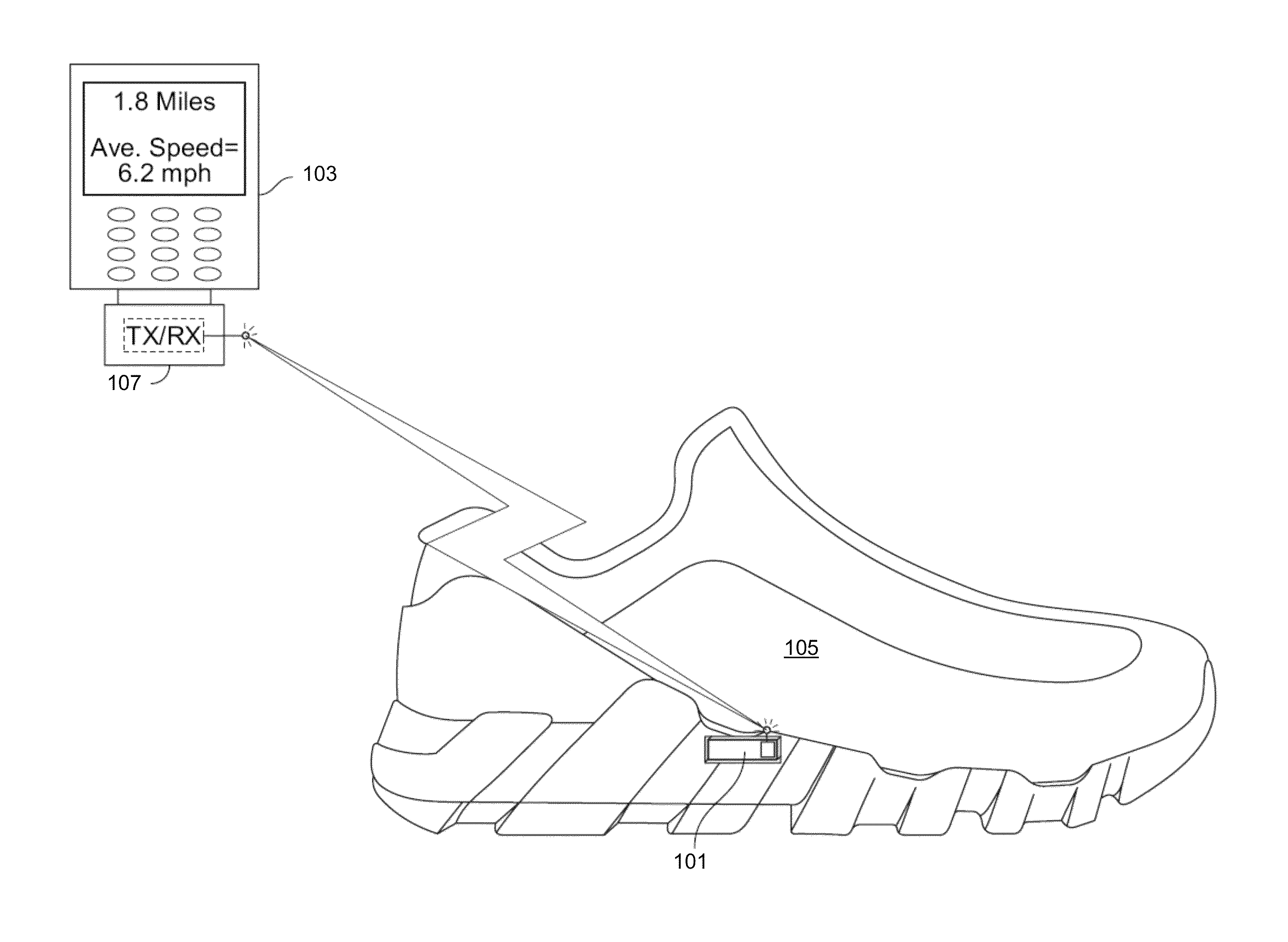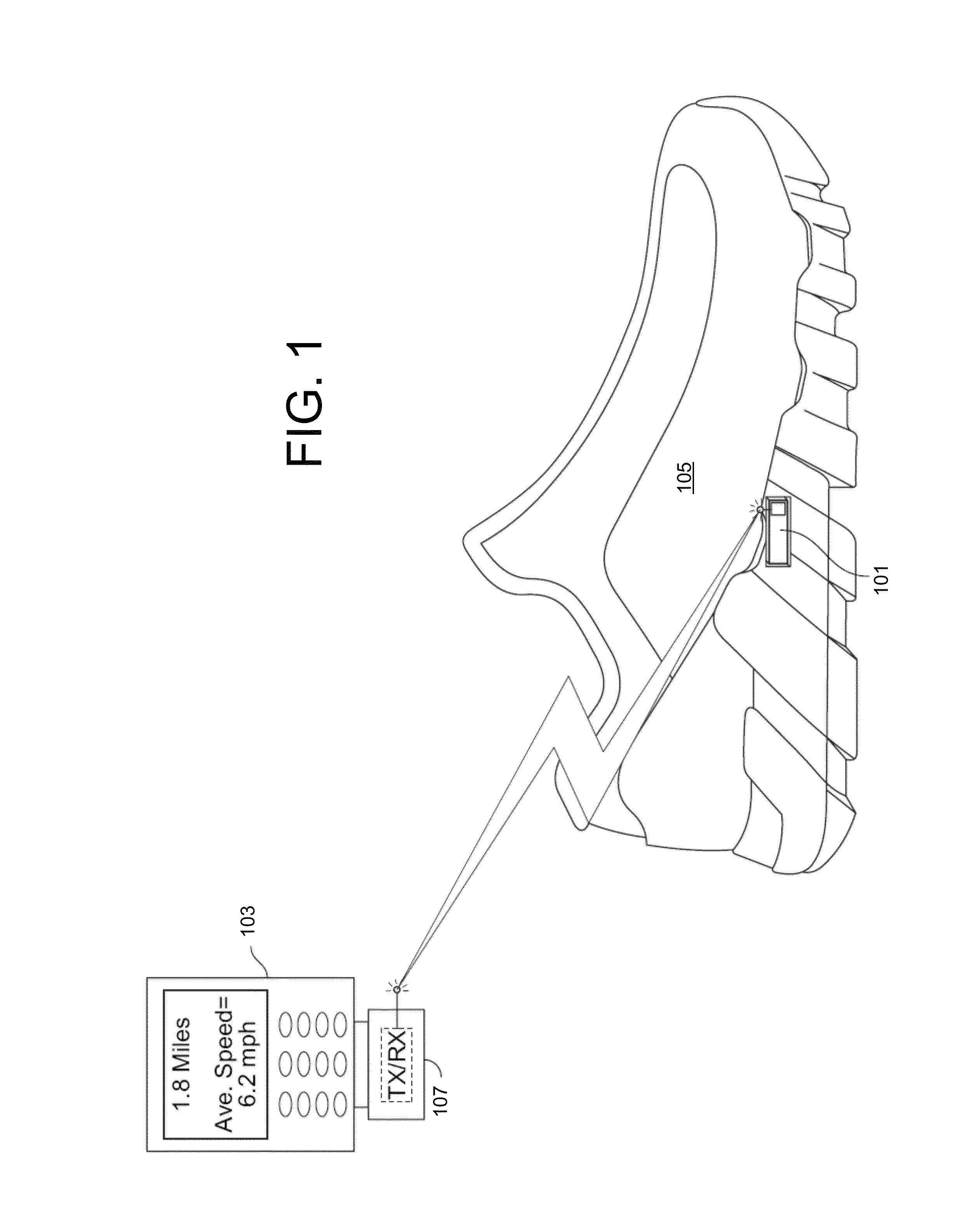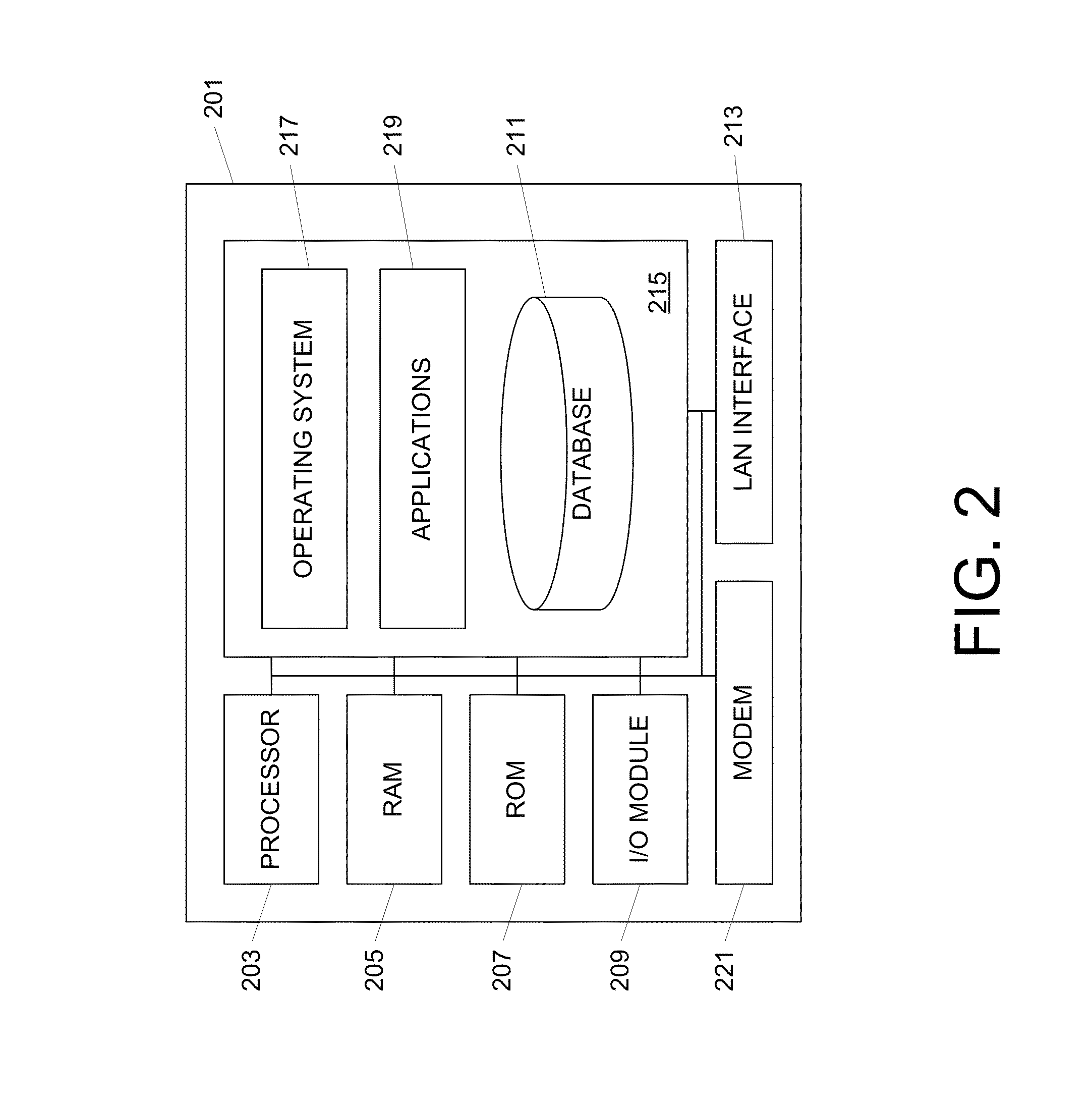Sensor-based athletic activity measurements
a sensor-based, athletic activity technology, applied in distance measurement, gymnastic exercise, instruments, etc., can solve the problem that the accelerometer-based athletic activity measurement system is only able to measure the activity of the body
- Summary
- Abstract
- Description
- Claims
- Application Information
AI Technical Summary
Benefits of technology
Problems solved by technology
Method used
Image
Examples
Embodiment Construction
[0025]While this invention is susceptible of embodiment in many different forms, there are shown in the drawings, and will herein be described in detail, preferred embodiments of the invention with the understanding that the present disclosure is to be considered as an exemplification of the principles of the invention and is not intended to limit the broad aspects of the invention to the embodiments illustrated and described.
[0026]FIG. 1 illustrates an example athletic activity system including a foot-mounted accelerometer-based sensor 101 and an information display device 103. Foot-mounted sensor 101 may be placed in a shoe or other type of footwear, attached to a user's foot or leg, attached to the footwear (e.g., on an exterior portion such as the shoelace or internal to a sole portion as shown with shoe 105) or the like. Sensor 101 includes a solid-state accelerometer that is configured to sense acceleration along multiple axes. For example, sensor 101 may include a six-axis ac...
PUM
 Login to View More
Login to View More Abstract
Description
Claims
Application Information
 Login to View More
Login to View More - R&D
- Intellectual Property
- Life Sciences
- Materials
- Tech Scout
- Unparalleled Data Quality
- Higher Quality Content
- 60% Fewer Hallucinations
Browse by: Latest US Patents, China's latest patents, Technical Efficacy Thesaurus, Application Domain, Technology Topic, Popular Technical Reports.
© 2025 PatSnap. All rights reserved.Legal|Privacy policy|Modern Slavery Act Transparency Statement|Sitemap|About US| Contact US: help@patsnap.com



